Happy New Year!
This place is a dream. There is a real hill here behind Donny’s Marina. Behind it is a nice short walk to New Plymouth, the village on the Southern end of Green Turtle Cay. From here, you can see the southwest part of the island. That part of the island has another anchorage and a bay. Little Abaco island is visible from there, and for all intents and purposes, that island is the ‘mainland.’ Its an amazing view especially since the sun sets in that direction.

I hate leaving things the last minute. Actually, I love leaving things the last minute, but I hate doing that on a boat. But sometimes that happens. The last morning had us rushing to get our fresh water tanks filled. The city of freeport still had questionable water quality from the hurricane damage, and the marina’s own reverse osmosis system was not working. So we just left at nine in the morning.
Spencer Rock channel is a rarely traversed piece of water. The sea bed there connects Grand Bahama island with Little Abaco island. Most people head to the Abacos go through the Sea of Abaco, skipping Grand Bahama island altogether. But we had wanted to experience Freeport, so we had to do things the hard way. The charts show depths that we can make it through as long as we do not do it at low tide. But Hurricane Dorian would have moved a lot of the sand around, so we weren’t sure of what to expect. Pre-dorian, a few boats have gone through and reported no problems. When we arrived in the Bahamas, we had determined that you can get a decent view of the bottom at night. Thus, it was safe to travel through shallow areas as long as you slowed the boat down. The only kicker is, its a bit harder to visually determine the depth when it is dark, because you can only see what your spot light is showing.

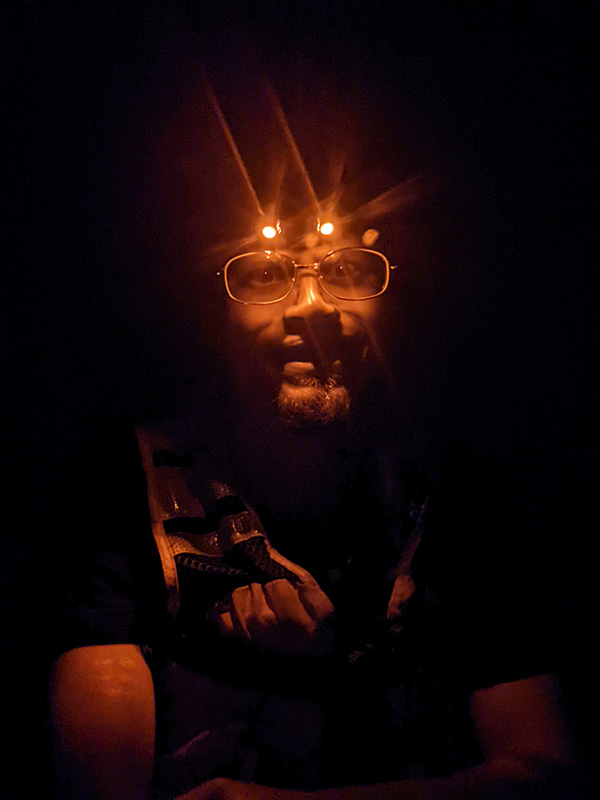
We anchored just south of the Spencer Rocks channel. Even though I was tired and a bit miserable from the passage, that first few minutes of a night anchorage with clear water felt so enchanted. It was another beautiful high nocturne scale night, not much unlike from our first night on the Bahamian continental shelf.
When we woke up, it was game time. These short, three hour naps always felt tiring, but once I was up and moving, I felt a bit refreshed. In the eerie darkness with the waters around us glowing from the ship’s lights, I yanked the anchor off the sea bottom by hand, just for a change of pace. Alec went up at the bow with his flashlight. We did the forty five minute passage without much issue, but the charts were definitely off. Sonora’s keel scraped bottom lightly a few times. Turns out I made a mistake– I was a lot earlier in the tide than I thought I was. Another hour or so I’d have had at least a foot under my keel at all times. At one point, Alec spotted a brain coral right at the ship’s path. I left bread crumbs and added my notes to be shared publicly later on.
Fox town was this small fishing village at the western end of Little Abaco Island. We made a fuel stop there, anchoring a few hundred meters off the coast. Dinghy ride in was eerie. Lots of coral heads sticking out on the surface, like spires growing out of the seabed. But it was also devoid of life. Locals had fished it out. Apparently they mainly go for lobster, but will take whatever they see. We climbed up the questionable docks and discovered a small village sitting on a small road that ran along the length of Little Abaco island. We bought some snacks, which makes any stop seem like an oasis in the desert.
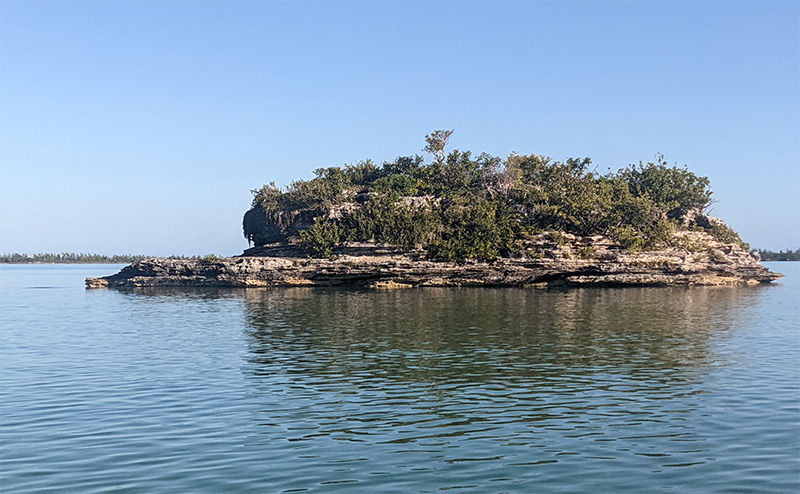
A half-blind gentleman who must have been in his late sixties or seventies chatted up with us. He at first told me how he loves how respectful Asians are to the elders. There was a notable hint of genuine curiosity, which was a contrast to my interactions at Freeport. We started talking about Junkanoos, which is the Bahamian version of a carnival parade. The pandemic had canceled all of the Junkanoos, we learned that people missed it a lot.
Within five minutes of this conversation, he tells me how he used to sleep with a lot of women in the Junkanoos. I had no idea if he is being truthful or not. But a lot of Bahamians will say anything to get a laugh out of you, and its often something about their sexual prowess. Him and his friend also told me about how everyone in Fox Town relies on fishing, and about how they miss having Junkanoos, since they were all canceled from the Pandemic. It was really nice to have someone want to simply tell me about their life in this part of the world.
After paying way more than I do stateside for gasoline, we left Fox Town. Traversing the Sea of Abaco was uneventful. No wind. We motored the whole way. We got the genoa out a few times just to help save fuel, but the engine kept running. Excitement built up as we started spotting islands all around us. The same islands that we had been reading about on our cruising guide. We thought about all the things we were missing out on on the islands we skipped, but we mostly just enjoyed this beautiful day atop the beautiful light-blue of the Sea of Abacos.
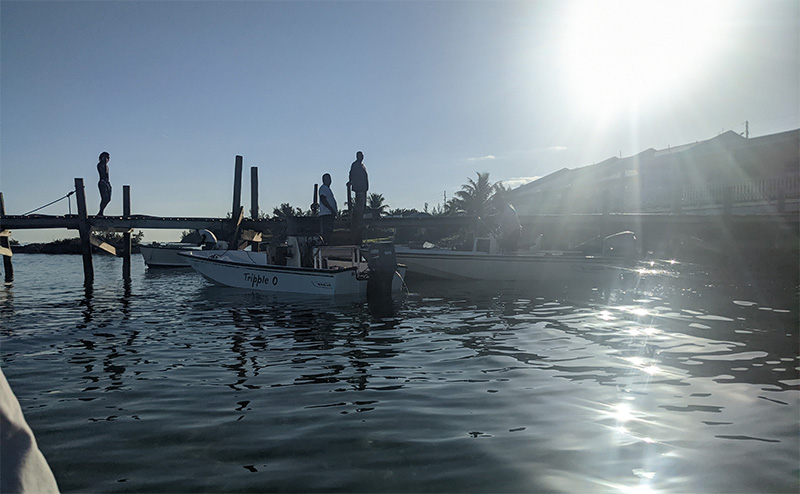
Green Turtle Cay had two protected harbors to choose from. White sound was the one up North, named for its white sandy bottom, and Black Sound was down south, named for the grass-covered bottom. White Sound’s predominant feature was the fancy resort. Black Sound’s coast was lined with locally owned businesses. Tiny docks that they called Marinas, waterfront cottages, and a boat yard. I’d discover later that visitors of both ends of the island get a completely different experience. We, of course, picked Black Sound.
I hate having to pay for a mooring. Anchoring should be a right — no one truly owns the water, and the water is the last refuge of the freedom-seekers of this world. Most authority for someone to claim rights to collect mooring fees is simply that they went and put a mooring ball in and took up room that you could have anchored in.
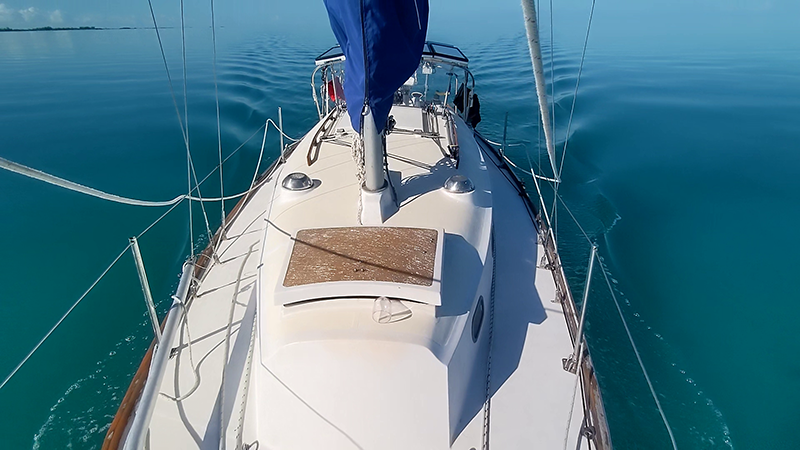
Unfortunately, Black Sound has extremely poor holding and it would be wiser to pay for a mooring. That is, as long as they were securely fastened to the sea floor. On the way, me and Alec had done some research and found out a guy named Donnie and Phil owns a bunch of good mooring balls there. Donny was easy to reach – his daughter-in-law, who acts as his secretary, responded on whatsapp. Unfortunately, he was out of moorings. We had a lot of trouble reaching Phil, but finally got through when we tried the third number that belonged to him. Fortunately, he had a ball in Black Sound, and we took it.
The approach at Black Sound should be made at above average tide. No problem. We had Alec at the bow just in case, but we made it through without issue. I could see why it was called Black Sound. The dense sea grass at the sea bed and the shadows cast by the mangroves and trees made everything look black. As we were picking up the mooring, we heard a noise of a four stroke engine. Sounded just like a dinghy approaching us. It was a golf cart going by the road on the island. It made us really curious about what is in town.
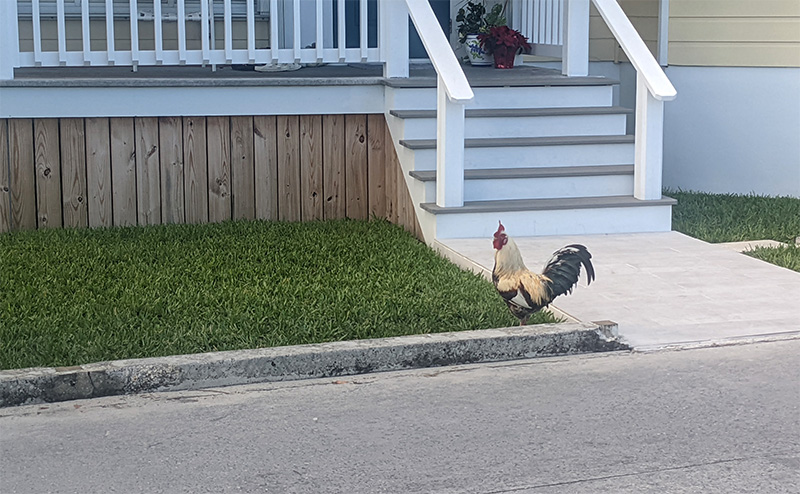
I had asked Donny’s secretary if we could still pay to use the shower and water at his facility. She said ‘sure!’ I found Donny at the docks and paid him ten dollars to use his dinghy dock. He explained the honor system for the water and the showers. He spoke in a steady, slow, but loud volume. In fact, I think he only has one volume. He had a very distinct accent which I would learn is spoken by people with eighteenth century Loyalist ancestry. It reminded me of Irish people because it was hard to tell if he liked you or not. But I realized he was just being as hospitable as anyone can be. He pointed to a trail leading out of his property, and told us about the things in the town of New Plymouth.
I always think of myself as someone socially awkward and someone who prefers to be by himself. But I guess a year of pleasing strangers on my business’ boat has had a positive effect on me. I think it reinforced my belief that people tend to like me. I made a lot of new friends in Green Turtle Cay. Ironically hardest people to make friends with have been people my age or younger that I had run into on the island. That being said, it is easy to make friends with solo sailors. Even the most introverted hermit needs human contact, and if you aren’t good at ice-breaking, you won’t meet anyone. We waved at a solo sailor moored near us, not knowing that he would eventually become what seemed like the best friend in the world.
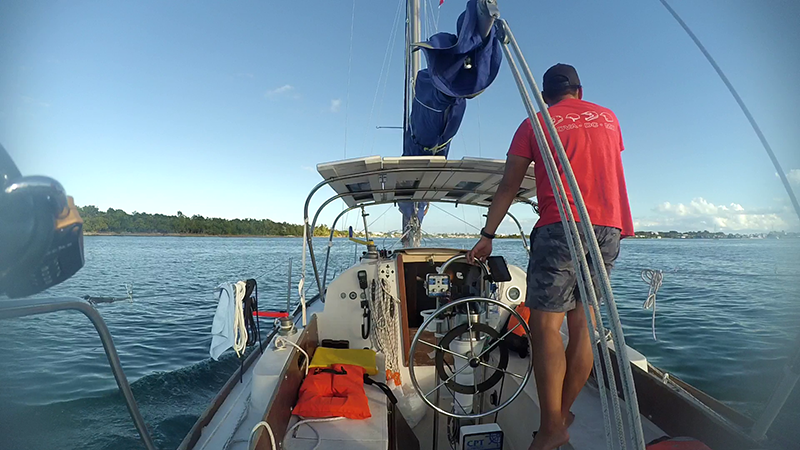
When we first got here, one of the things my mate really wanted to do was to enjoy some nightlife on New Years eve. Despite my cautiousness with the pandemic, I wanted to do this too. We talked it through, and we decided to stick to less crowded outdoor patios. Turns out this isn’t a problem. Even the ‘indoors’ here is semi-outdoors, and there really aren’t that many people here. Despite how close it is to the ‘mainland,’ Little Abaco island is already sort of remote, and the out islands such as Green Turtle Cay is even more so. Population of this place is under five hundred, and I bet a huge portion of that population are transients. We decided to check out the town as soon as we could.
This island was beautiful, even in the inhabited areas. We walked south to climb a modest but steep hill, lined with beautiful homes. The villagers had put up a large arch over the road at the top of the hill, which continued down into ‘town.’ As you crest the hill, you are greeted by a breathtaking view of a cozy village beneath you. Further out, facing west, was a calm bay, which seemed to always be colored by the colors of the sunset. At night, the arch was lit up with Christmas lights. In fact, the whole town was lit up with colorful Christmas lights.
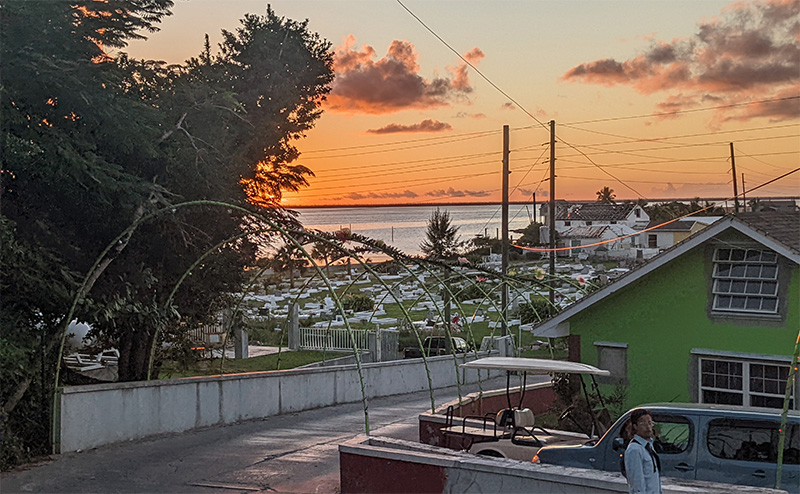
It was New Years eve, but the island still shut down on island time, which is to say is any time between six and eight in the evening. Shortly after sunset, there were only a few people out, mostly visitors from the USA. And despite being hyped up for New Years Eve, fatigue hurt us hard. After all, we just got done with a thirty hour, hundred thirty mile passage. So, squarely on island time, we were back on Sonora falling asleep by nine. When in the Bahamas, do as Bahamians do.
On another day, I talked to both Phil and Donny. Donny, the owner of the marina gave me a brief history about the island. His family has been here for three generations. That number of generations tend to spans for about a hundred years. This doesn’t make him one of the loyalists that settled here, but he is solidly a local. My first contact with Phil was when he came to collect our mooring fee. I asked him if anything was open on the upcoming Sunday. He shouted in a loud but friendly voice; ‘This is a Christian nation, son! We go to Church on Sundays.’
Apparently this island is one of the few places considered to have Caucasian roots, though I don’t know how valuable this distinction is. Aside from the Lucayan Indians, whom by now have completely genetically integrated to the local populace, everyone else came over here in the Age of Sail. I learned much of this from when I casually asked Donny why old Boston Whalers are the choice of boat in the Bahamas. He launched into a twenty minute lecture about the island’s history. This is how I knew he liked me!
Much of the island’s modern history can be marked by the advent of various technologies. When the island didn’t have a well, water had to be shipped and people hardly settled here. When the island discovered a well, people started living here and people would walk to one of the ends of the island with buckets to bring water, especially during times of no rain. Then the British finally sent a shipment of cement, so they were able to build a cistern, reducing the reliance on the well. So that is one way to mark the various parts of the history of the Green Turtle Cay island.

The other way is to look at the ecology. Before we started using synthetic sponges, natural sponge was all there was. The islanders would harvest sponge to ship over to France. Of course, the usual lobstering, fishing, and conch harvesting was all there too. When SCUBA technology became affordable, more of the lobsters and sponge disappeared. Then ‘hookah’ technology came about, which runs a compressor at the surface to tether a diver down to thirty feet or so. Its more affordable than SCUBA equipment. So when that came out, all the lobster at that depth disappeared. When higher horsepower outboards became lighter and affordable, the outer reefs got fished out. Finally, when GPS chart plotters came out, even more of the resources were sapped from the sea bed, as people can easily mark the prime locations and harvest them all in one day, even at night and inclement weather.

It was really obviously clear from both Phil and Donny’s talk that they both deeply cared about the eco-system at sea. In ways, its a luxury to care about that. Both Phil and Donny mainly work in tourism, being mooring and dock operators. Others are too busy harvesting as much as you can to make money. But it reinforced my goals on this cruise. I shall make minimal ecological impact on this beautiful place. I will observe all laws and regulations even if they are unenforced, or worse, unfairly enforced. I shall take no fish any bigger than I need to feed me and my friends, and I shall not take any rare species.
-To be continued
Loyalists – Folks who sided with the British during the period of time shortly before, during, and after the American Revolutionary war. A lot of them escaped the increasingly hostile social environment of the colonies to the nearest British colony, which was the Bahamas.
Boston Whaler – I own one back home that I use for sightseeing cruises at reflectionsdc.com. These boats have a closed-cell foam, giving them an ‘unsinkable’ reputation. They are also very simple boats with a great performance. Not much to them. So even if your Whaler is all beat up from decades of abuse, if it still floats, it works. This, turns out, is the reason why they are so popular in the Bahamas.